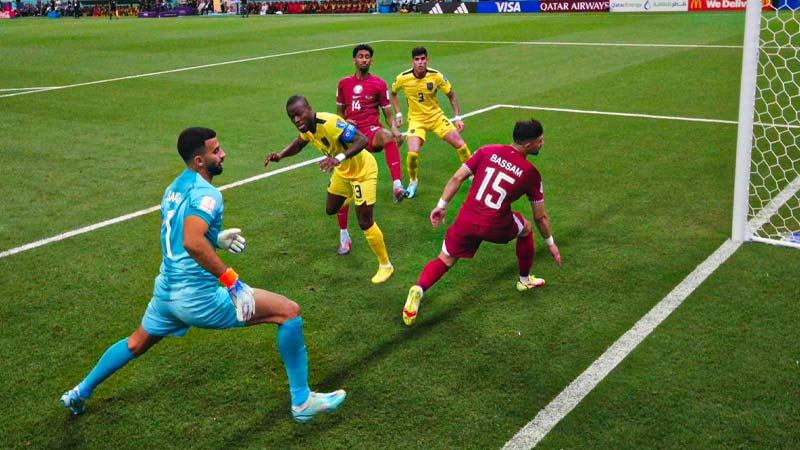It has been over one hundred and fifty years since soccer was invented! It eventually won our hearts and went through many changes to this point.
More than half of the world’s population knows what Soccer is and how it’s played. But when it comes to getting into the detailed Soccer rules and regulations, how many of us are aware of it?
To upgrade yourself as a regular Soccer fan, here’s everything about Soccer Rules and Regulations, you must know.
Origin of Soccer
England is the home of origin of Soccer. The British invented it in the 19th century. But its root was tracked down back to 2,000 years more.
It is evident that soccer was prominent in England during the Middle Ages, referred to as medieval football. Alternate names were folk football, mob football, and Shrovetide football.
This was before the time. The official Football Association (FA) started in 1863. Fédération Internationale de Football Association (FIFA) was formed later in 1904, by the global Football authorities.
After the formation of FIFA, there was no going back! Soccer had tremendous growth as a sport. In 1930, the FIFA World Cup was arranged, and Uruguay became the first World Cup champion against Argentina.
The records say, that more than 26 billion people worldwide enjoyed watching the Football World Cup since 1930.
It’s the leading sport worldwide, and the most popular one. As of now, 3.5 billion people are regular fans of Football, more in number than 2.5 billion cricket fans!
Soccer Rules And Regulations
Now, let’s get into the real part, Soccer Rules and Regulations.
In Short, The Basics of Soccer:
Two teams participate in soccer. Each team has 11 players in total and that includes the goalkeeper too.
The match starts with a kickoff and the toss-winning team decides what to do, either to kickoff or attempt to goal. One team takes goal attempts and the other one defends.
The team with the most goals at the end of the match is declared the winner. That’s how the match goes along. Now, in between the match, comes halftime, extra time, penalty, and more! Let’s dive more!
In Soccer Rules and Regulations

Let’s open up one at a time!
The Field
Also known as a pitch, the Soccer field is rectangular. The dimensions can vary, but a standard field measures approximately 100-110 meters in length and 64-75 meters in width.
We have the soccer field divided into two halves – a center circle and a center spot where the game begins.
Get familiar with the lines that are prominent in Soccer.
- Touchline
- Center Circle
- Goal Line
- Halfway Line
- Penalty Area
- Center Mark
- Penalty Arc
- Corner Arc
Game Duration
Every soccer match comes with two halves, each of them last for 45 minutes, in total 90 minutes. A half-time break of 15 minutes comes between the two halves.
Before the halftime break, comes the stoppage time. The referee offers an additional 5-6 minutes of play to cover the time lost during each half due to injury or any other interruptions.
We wrote a detailed article on Soccer Stoppage Time Rules. Give it a go!
Additionally, when the match ends in a draw in regular time, a few small leagues will stop the match and let it be.
However, in the FIFA World Cup or other Cup tournaments, a winner has to be determined. The draw results enter the match into extra time or a penalty shootout to determine the winner.
The longest soccer match in history took 173 minutes (2 Hours and 53 Minutes) to end in 1946. The match was between Stockport County and Doncaster Rovers, and players had to carry on non-stop.
Scoring
In soccer, it is a goal when the entire ball passes the goal line between the goalposts and beneath the crossbar. The winning team has the most number of goals.
In minor leagues, where the match ends in a tie and there is no extra time, they might award each team a point. However, others might use goal differences to determine the winner.
As mentioned earlier, in Cup finals, a winner has to be determined by hook or by crook. If there is still no winner after an extra time, there will be a penalty shootout, followed by a death phase in a penalty shootout (if still there’s no winner in a Penalty Shootout).
Offside Rule
It is perhaps the most confusing rule of Soccer. The offside rule prevents players from positioning themselves in an offside position.
In soccer, a player is offside if they are closer to the opponent’s goal line than both the ball and the second-to-last defender.
However, remember that a player is not offside if they are in their half or level with the second-to-last defender. Learn more about offensive rules here.
Penalties and Penalty Shootouts
Penalty shootouts are used to determine the winner of knockout-stage matches that end in a draw. Most often, it comes as a result of foul.
The penalty shootout is an automatic one-on-one situation where five players take their turns against the goalkeeper one at a time. The player who kicks generally stands 11 meters (12 yards).
Even if the extra time is of no use to determine the winner, each team takes turns to shoot from the penalty spot.
Substitution
Each team in Soccer can substitute five players in the regulation match. The referee holds up a board showcasing two jersey numbers of players (1) who is going to be substituted and (2) who is going to replace the player.
It is in the rulebook that, substitutes can be made at any stoppage in play. Plus, the player who is substituted out must leave the field before the substitute enters.
Player’s Role & Responsibilities
Eleven players form a team in soccer. One of them is the goalkeeper and other roles are of three forwards, four midfielders, and three defenders.
On the soccer field, we have one referee who oversees the match. Two assistant referees, also known as the linesmen help the referee in making decisions.
Last Words
Soccer is not just a sport. For many of us, it’s an expression of joy and thrill. It is the one sport that knows no cultural boundaries and continues to cheer up billions of people at the same time.
Soccer Rules and Regulations confirm the fairness and equality of the match.
Whether you’re a passionate player, a dedicated fan, or a casual observer, a solid understanding of soccer’s rules and regulations will undoubtedly level up your experience!
Keep in touch with us for more! Also, don’t forget to share our article with your friends and other soccer lovers and let them know about us!







